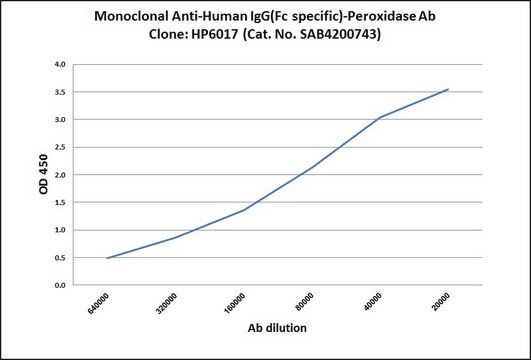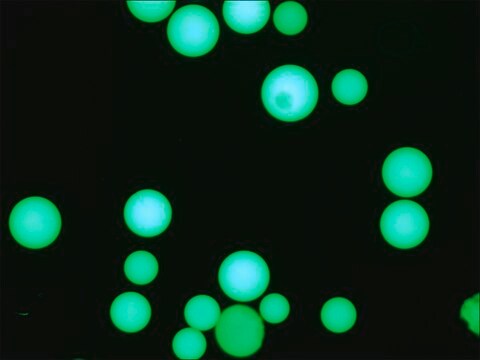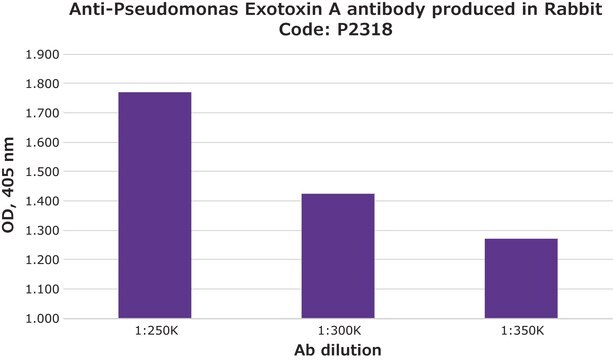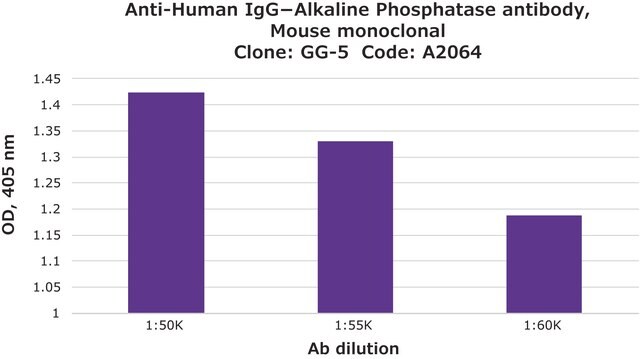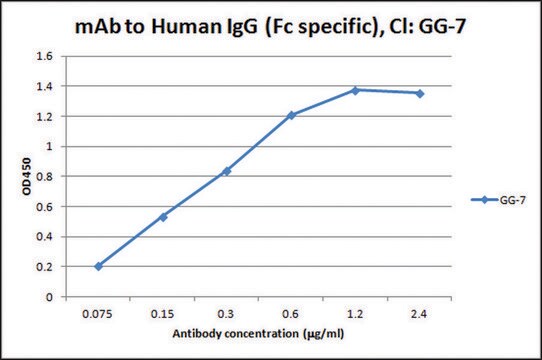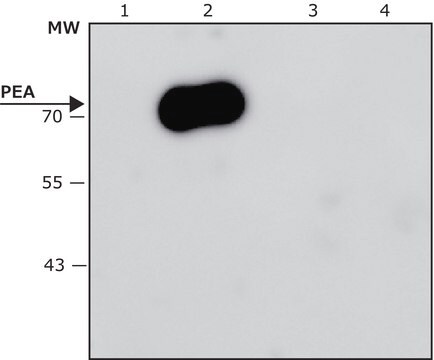SAB4200790
Anti-Human IgG (Fc specific)-Peroxidase antibody, Mouse monoclonal
clone GG-7, purified from hybridoma cell culture
Synonim(y):
Anti-Human immunoglobulin G
About This Item
Polecane produkty
pochodzenie biologiczne
mouse
Poziom jakości
białko sprzężone
peroxidase conjugate
forma przeciwciała
purified from hybridoma cell culture
rodzaj przeciwciała
primary antibodies
klon
GG-7, monoclonal
Postać
lyophilized powder
reaktywność gatunkowa
human
metody
direct ELISA: 1:40,000-1:80,000 using 2.5 μg/mL human IgG1 for coating
izotyp
IgG1
Warunki transportu
dry ice
temp. przechowywania
−20°C
docelowa modyfikacja potranslacyjna
unmodified
Opis ogólny
The Fc fragment has various important functions such as complement fixation, site for rheumatoid factor (autoantibody directed to Fc) attachment, passage through the placental membrane and protein A binding. A certain population of lymphocytes also possess an "Fc receptor". These functions indicate the importance of immunoreagents specific for the Fc fragment of Human IgG.
Monoclonal Anti-Human IgG (Fc specific) is specific for the Fc fragment of Human IgG and is observed with all human IgG subclasses but not with the Fab fragment of human IgG, purified light chains, human IgA or human IgM.
Immunogen
Zastosowanie
Postać fizyczna
Inne uwagi
Not finding the right product?
Try our Narzędzie selektora produktów.
Hasło ostrzegawcze
Warning
Zwroty wskazujące rodzaj zagrożenia
Zwroty wskazujące środki ostrożności
Klasyfikacja zagrożeń
Skin Sens. 1
Kod klasy składowania
12 - Non Combustible Liquids
Klasa zagrożenia wodnego (WGK)
WGK 2
Certyfikaty analizy (CoA)
Poszukaj Certyfikaty analizy (CoA), wpisując numer partii/serii produktów. Numery serii i partii można znaleźć na etykiecie produktu po słowach „seria” lub „partia”.
Masz już ten produkt?
Dokumenty związane z niedawno zakupionymi produktami zostały zamieszczone w Bibliotece dokumentów.
Nasz zespół naukowców ma doświadczenie we wszystkich obszarach badań, w tym w naukach przyrodniczych, materiałoznawstwie, syntezie chemicznej, chromatografii, analityce i wielu innych dziedzinach.
Skontaktuj się z zespołem ds. pomocy technicznej